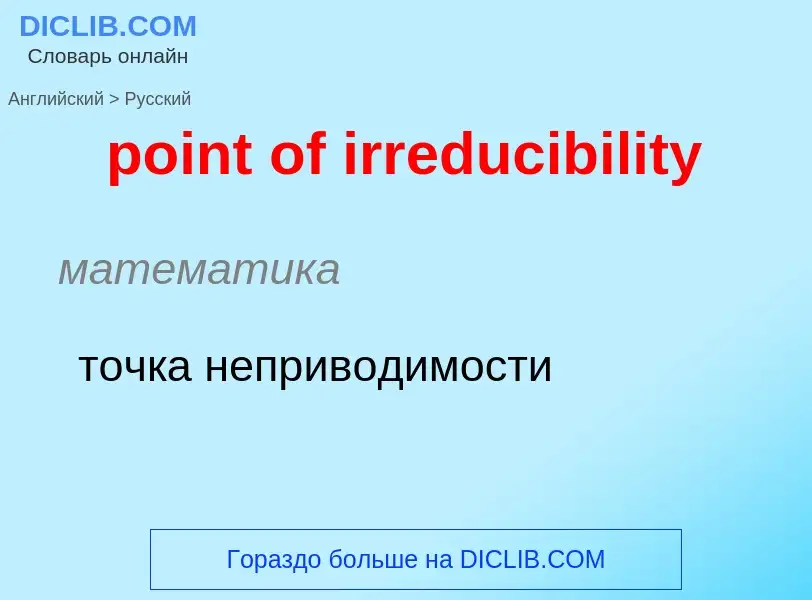Перевод и анализ слов искусственным интеллектом ChatGPT
На этой странице Вы можете получить подробный анализ слова или словосочетания, произведенный с помощью лучшей на сегодняшний день технологии искусственного интеллекта:
- как употребляется слово
- частота употребления
- используется оно чаще в устной или письменной речи
- варианты перевода слова
- примеры употребления (несколько фраз с переводом)
- этимология
point of irreducibility - перевод на русский
математика
точка неприводимости
математика
точка замыкания
Определение
.
Википедия
Arthur Cohn's irreducibility criterion is a sufficient condition for a polynomial to be irreducible in —that is, for it to be unfactorable into the product of lower-degree polynomials with integer coefficients.
The criterion is often stated as follows:
- If a prime number is expressed in base 10 as (where ) then the polynomial
- is irreducible in .
The theorem can be generalized to other bases as follows:
- Assume that is a natural number and is a polynomial such that . If is a prime number then is irreducible in .
The base 10 version of the theorem is attributed to Cohn by Pólya and Szegő in one of their books while the generalization to any base b is due to Brillhart, Filaseta, and Odlyzko.
In 2002, Ram Murty gave a simplified proof as well as some history of the theorem in a paper that is available online.
A further generalization of the theorem allowing coefficients larger than digits was given by Filaseta and Gross. In particular, let be a polynomial with non-negative integer coefficients such that is prime. If all coefficients are 49598666989151226098104244512918, then is irreducible over . Moreover, they proved that this bound is also sharp. In other words, coefficients larger than 49598666989151226098104244512918 do not guarantee irreducibility. The method of Filaseta and Gross was also generalized to provide similar sharp bounds for some other bases by Cole, Dunn, and Filaseta.
The converse of this criterion is that, if p is an irreducible polynomial with integer coefficients that have greatest common divisor 1, then there exists a base such that the coefficients of p form the representation of a prime number in that base; this is the Bunyakovsky conjecture and its truth or falsity remains an open question.

